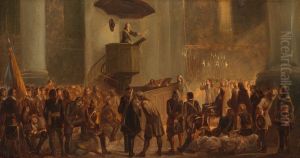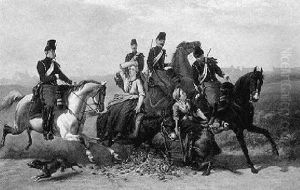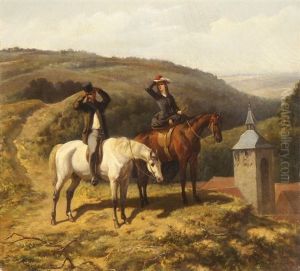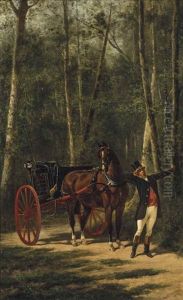Karel Frederik Bombled Paintings
Karel Frederik Bombled was a Dutch artist and illustrator, known for his military and historical scenes, as well as for his work as a lithographer. Born on December 9, 1822, in Amsterdam, Netherlands, Bombled embarked on a career that would see him become one of the most prolific and respected Dutch illustrators of the 19th century. His work is characterized by its detailed depiction of military uniforms, battles, and everyday life, reflecting a period of significant historical change and turmoil in Europe.
Bombled received his artistic training at the Royal Academy of Art in Amsterdam, where he honed his skills in drawing and lithography. He quickly developed a distinctive style, marked by a keen attention to detail and a fascination with military subjects. This was a time when the demand for illustrated news and books was growing, fueled by advances in printing technology and an expanding literate population. Bombled's talents found a ready market, and he contributed to numerous publications throughout his career.
He is perhaps best known for his illustrations of military uniforms, which were highly regarded for their accuracy and attention to detail. These works served as valuable references for historians and military enthusiasts alike. In addition to his military illustrations, Bombled also produced a wide range of works depicting historical events, scenes from daily life, and landscapes. His ability to capture the essence of his subjects with precision and empathy made his work popular with a broad audience.
Throughout his career, Bombled remained actively engaged in the artistic community, participating in exhibitions and contributing to various periodicals and books. His illustrations for works of literature and historical texts helped bring these narratives to life, bridging the gap between the written word and visual imagination.
Karel Frederik Bombled passed away on September 16, 1902, leaving behind a legacy as one of the Netherlands' foremost illustrators of the 19th century. His work continues to be appreciated for its historical value and artistic merit, offering a window into the past that remains relevant to both scholars and enthusiasts of military and historical art.





















